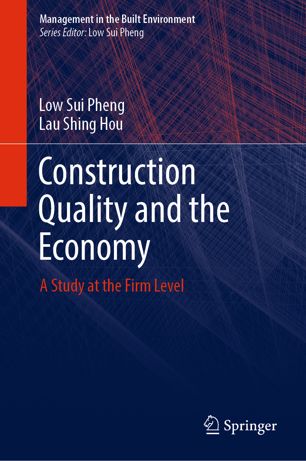

Most ebook files are in PDF format, so you can easily read them using various software such as Foxit Reader or directly on the Google Chrome browser.
Some ebook files are released by publishers in other formats such as .awz, .mobi, .epub, .fb2, etc. You may need to install specific software to read these formats on mobile/PC, such as Calibre.
Please read the tutorial at this link. https://ebooknice.com/page/post?id=faq
We offer FREE conversion to the popular formats you request; however, this may take some time. Therefore, right after payment, please email us, and we will try to provide the service as quickly as possible.
For some exceptional file formats or broken links (if any), please refrain from opening any disputes. Instead, email us first, and we will try to assist within a maximum of 6 hours.
EbookNice Team

Status:
Available0.0
0 reviewsThis book discusses the relationship between construction quality and the state of the Singapore national economy, and describes how construction quality is affected as contracting firms strategically manage issues relating to profitability and survivability during economic boom and bust cycles. Adopting a three-pronged approach to explain the key issues, the book first explains the effect of the state of the Singapore national economy (boom or bust) on the construction quality delivered by contracting firms. Secondly, it explains how contracting firms respond to the performance of the national economy through their dynamic bidding strategies, leading to significant quality trade-offs in some instances, especially when there is imprecise market information. Thirdly, it recommends various strategic measures that key stakeholders and government policy-makers can take to circumvent the quality trade-off in the construction industry when faced with dynamic fluctuations in the performance of the national economy.
Although the book focuses on Singapore, it appeals to a global audience since countries worldwide (and their respective building-related stakeholders) face the same issues in terms of the time–cost–quality trade-off decision-making process involving the entire supply chain.